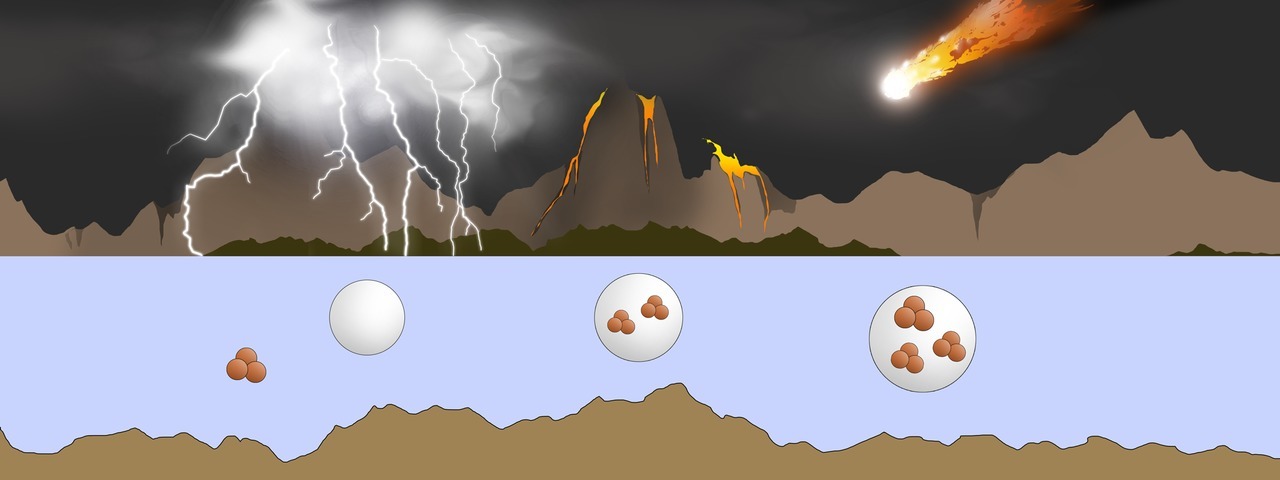23.7 Precambrian era
The Earth is estimated to have been formed 4.6 billion years ago. In the beginning, the hot planet was lifeless. However, over millions of years, simple chemical compounds began to form on the shores of the planet's early oceans. These simple molecules formed membrane structures called vesicles. These vesicles contained microscopically small organic matter and were able to divide into new vesicles. This is how life developed in the ocean four billion years ago.
Presumably, the first cells were bacteria-like organisms that gathered substances from the environment. The first self-sufficient organisms capable of photosynthesis were cyanobacteria; they utilized sunlight, carbon dioxide and water to produce glucose. In addition to glucose, photosynthesis produced oxygen, which was released into the planet's atmosphere. The released oxygen (O2) formed a protective layer of ozone (O3) high in the atmosphere. The formation of the ozone layer protected living organisms from UV radiation and enabled life to move from sea to land.
The first living organisms, bacteria and cyanobacteria, had no nuclei. These living organisms developed into more complex unicellular organisms. These eukaryotes already had a cell structure where a nucleus surrounded by cytoplasm, as well as many other organelles. Eukaryote fossils have been dated back to 500 million years. Evolution continued further when multicellular organisms began to evolve. The prehistoric period of life, from the evolution of the first signs of life to the first multicellular organisms, lasted for four billion years. In other words, this period accounts for about 90 percent of the total age of the Earth!
 During the early history of Earth, falling meteorites, constant lightning and solar ultraviolet radiation caused the formation of complex chemical compounds. This is called chemical evolution. The first cells were formed during the Precambrian era.
During the early history of Earth, falling meteorites, constant lightning and solar ultraviolet radiation caused the formation of complex chemical compounds. This is called chemical evolution. The first cells were formed during the Precambrian era.
